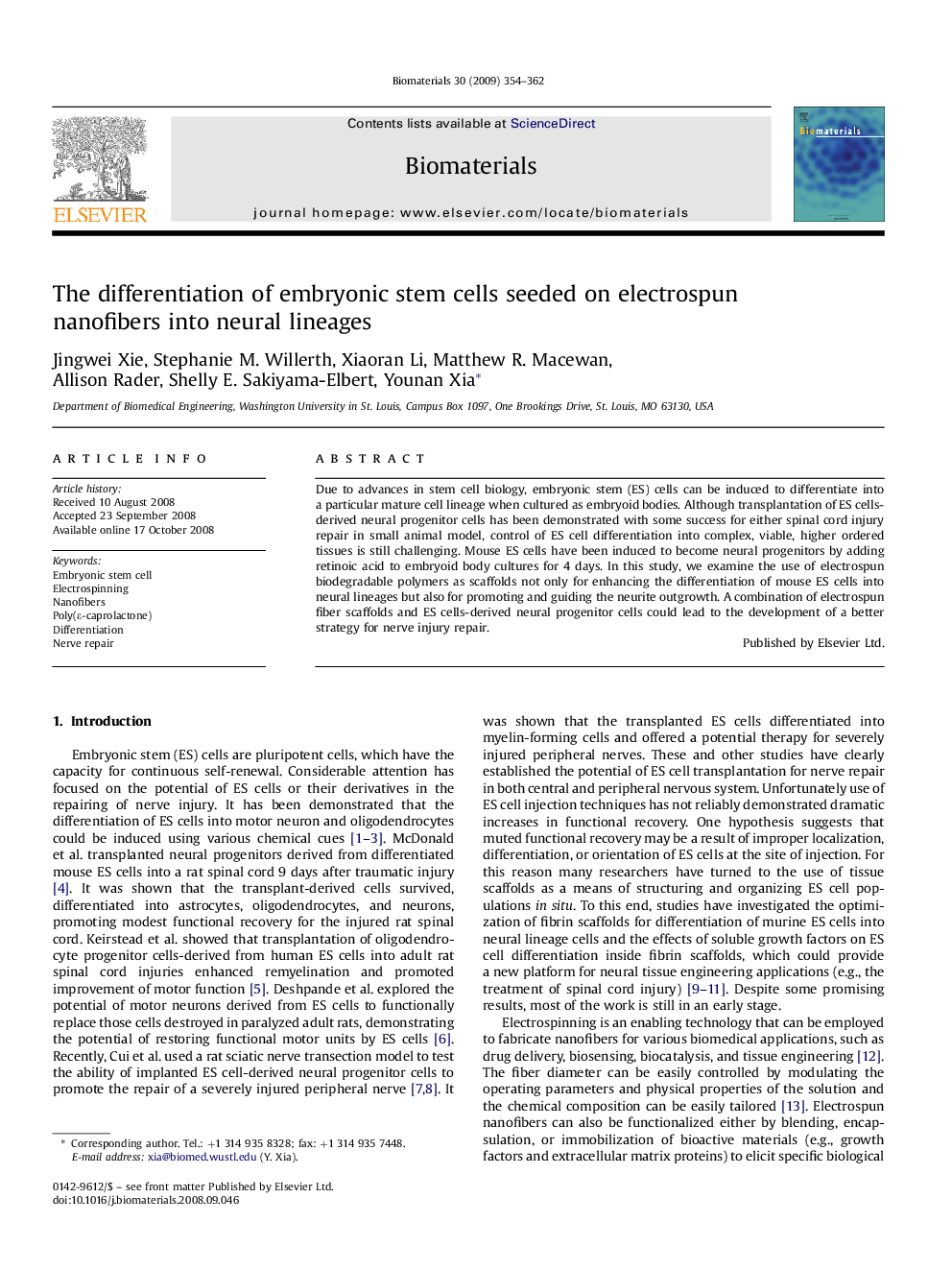| Article ID | Journal | Published Year | Pages | File Type |
|---|---|---|---|---|
| 10219 | Biomaterials | 2009 | 9 Pages |
Due to advances in stem cell biology, embryonic stem (ES) cells can be induced to differentiate into a particular mature cell lineage when cultured as embryoid bodies. Although transplantation of ES cells-derived neural progenitor cells has been demonstrated with some success for either spinal cord injury repair in small animal model, control of ES cell differentiation into complex, viable, higher ordered tissues is still challenging. Mouse ES cells have been induced to become neural progenitors by adding retinoic acid to embryoid body cultures for 4 days. In this study, we examine the use of electrospun biodegradable polymers as scaffolds not only for enhancing the differentiation of mouse ES cells into neural lineages but also for promoting and guiding the neurite outgrowth. A combination of electrospun fiber scaffolds and ES cells-derived neural progenitor cells could lead to the development of a better strategy for nerve injury repair.
